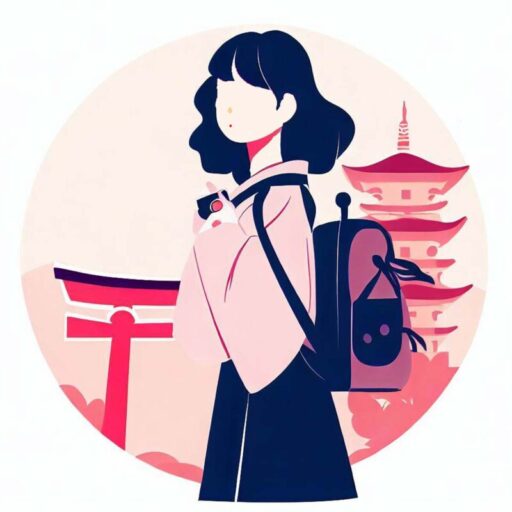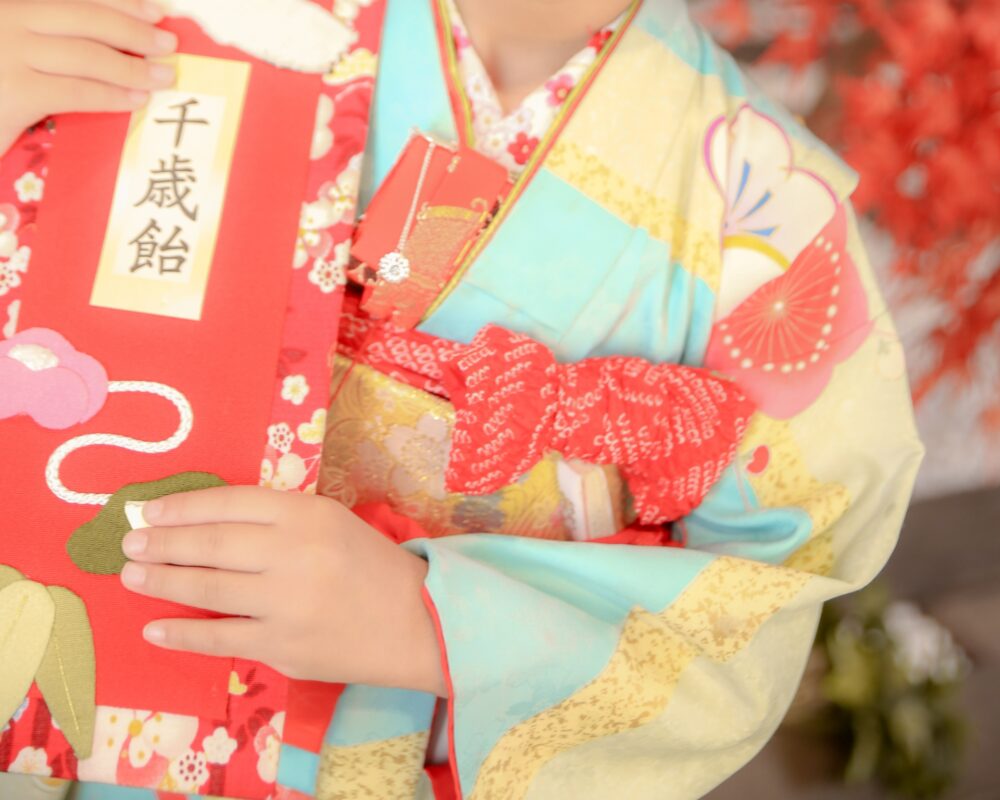Rediscover the charm of Shichigosan! Children’s festivals and their regional colors that change in history and modern times

『 This article is… 』
Introducing the charm of Shichi-Go-San and how to celebrate it in a regional way. From Meiji Shrine in Tokyo to Ryuso in Okinawa, unique customs from all over Japan are explained in “Kasumi Points”. For parents, relatives, and those interested in local culture. On this page, you can learn about the depth of the tradition and get useful information for Shichi-Go-San preparations in each region.
Japanese tradition has different colors depending on the season, and there are customs and events that are appropriate for each season. This time, we would like to focus on the Shichi-Go-San festival, an event that prays for the healthy growth of children, and introduce its history and origin, the characteristics of various regions, and its role and changes in modern times. Masu.
I’m Kasumi, a travel web writer who has traveled all over Japan. I have experienced first-hand the culture and history that is rooted in each of the 47 prefectures, and I feel that traditional events like Shichi-Go-San are important events that strengthen family bonds in any region. Let’s go on a journey that once again evokes the good old Japanese culture in our hearts while taking in the colorful Shichi-Go-San scenery from around the country.
- About the history and origin of Shichigosan
- Shichi-Go-San and the modern family
- Shichigosan customs and characteristics by region
- Harmony of Shichi-Go-San and modern lifestyle
- The future of Shichi-Go-San and the inheritance of tradition
- Summary and thoughts
- Kasumi point
About the history and origin of Shichigosan
What is Shichigosan? Explore its origins
Shichi-Go-San is a traditional Japanese event to pray for 3- and 5-year-old boys and 3- and 7-year-old girls to grow up healthy and happy. The event’s name comes from the numbers that indicate its age, but why were these particular ages chosen in the first place?
Its origin dates back to the Heian period. In Japan at the time, in order to cope with the high mortality rate during childhood, there was a custom of thanking children for their healthy growth and praying for their continued health when they reached a certain age. This event was originally called Kamioki,'' and is said to have started when children were three years old, when their hair began to grow. Eventually, 5-year-old boys were calledHakamagi,” and a ceremony was held to wear the hakama for the first time. For girls, at the age of seven, there was a ritual called “Obi-waki” which meant that they could wear adult kimonos.
These ceremonies were born out of parents’ gratitude for their children’s safe growth and prayers for their continued growth and happiness. These were gradually integrated over time and came to be recognized as “Shichi-Go-San.”
Colors by region
Japan is a country with a diverse climate, and there are subtle differences in the way Shichi-Go-San is celebrated depending on the region. For example, in Kyoto, where I visited, many families enjoy a meal at a high-end restaurant after performing a ritual ritual at a shrine. On the other hand, in Okinawa, I saw children wearing traditional costumes being celebrated while being watched over by the local community while the sound of the sanshin echoed.
These customs, which differ slightly in each region, reflect a part of Japan’s rich culture, which is interwoven with the climate, culture, and history of each region. Knowing how Shichi-Go-San is celebrated in each region can provide clues to the culture, values, and lives of the people in that region.
In this section, we delved into the history and origins, but in the next section, I would like to talk about the modern landscape of Shichi-Go-San and the family bonds felt during it. No matter how much the world changes, this beautiful Japanese custom of celebrating children’s growth will remain an irreplaceable part of our lives.
Shichi-Go-San and the modern family
The significance of Shichigosan in modern times
Even today, when technology is rapidly developing and our lifestyles are changing rapidly, Shichi-Go-San remains an important event for many families. New elements are being added to the age-old tradition, but at its core is the bond of family. Nowadays, there are many photo studios and costume rental services, and parents are very grateful for the wealth of Shichigosan-related services provided by Studio Alice and Kimono Yamato, for example. By using these services, you can prepare for Shichi-Go-San relatively easily even in your busy days, and as a result, the spirit of valuing the event will be passed on to the next generation.
Shichigosan in modern times
Nowadays, families visit shrines during Shichi-Go-San, and children can be seen dressed in colorful kimonos and Western clothes. At the famous shrines I visited, such as Meiji Jingu and Ise Jingu, many families visit every year to celebrate the growth of their children. In addition, the scenery of Shichi-Go-San celebrated in each region is rooted in the local customs, climate, and history, and the characteristics of each region are strongly expressed.
What are the results of Shichi-Go-San?
Although it is difficult to quantify the results obtained through Shichi-Go-San, it is of immeasurable value in terms of deepening family bonds and fostering social connections. Taking family photos and sharing time together will become precious memories for children. In addition, one of the major achievements of this event is to deepen interest and understanding of Japanese traditional culture.
In this section, we touched on the current state of Shichigosan, but in the next part we will focus on the characteristics of Shichigosan in each region, and look at the diversity that spreads throughout Japan and how regional culture colors Shichigosan. We will introduce more details about this.
Shichigosan customs and characteristics by region
Unique customs that decorate Shichigosan in each region
What I realized from traveling all over Japan is that even the same Shichi-Go-San festival has different faces depending on the region. From Hokkaido in the north to Okinawa in the south, the customs of Shichi-Go-San, which strongly reflect the climate and history of each region, are still alive and well.
For example, in urban areas such as Sensoji Temple in Tokyo and Kiyomizu Temple in Kyoto, you can find a style of celebration that blends modernity and tradition. Families sometimes go to sophisticated restaurants, and children can be seen picking up special Chitose candy at long-established Japanese sweets shops.
On the other hand, in local cities and rural areas, after visiting a shrine, families and relatives often gather together to celebrate with a homemade feast. I have seen that some areas in Nagano Prefecture have their own tradition of apple picking with families on Shichi-Go-San Day. It is a beautiful custom that compares the apple harvest to the growth of children and prays for fertility and health.
Specific examples of how to celebrate by region
Specifically, many families in the Kansai region eat kashiwamochi'' on Shichigosan Day. The oak leaves do not fall, and this symbolizes the hope that the tree will continue to be inherited. On the other hand, in Kyushu, there is a custom of dressing children in new kimono and serving them traditional dishes such asChikuzenni” while praying for a rich harvest.
There are also examples of Shichi-Go-San being tied to regional annual events, such as Aomori Prefecture’s Namahage'' and Akita Prefecture'sTachibana Festival.” These local events share the common desire of parents for the healthy growth of their children.
Regional culture and Shichi-Go-San
These diverse customs not only reflect the local culture, but also serve to strengthen bonds within the local community. Through Shichi-Go-San, learning the customs and history that have been passed down in the region since ancient times and passing them on to the next generation is essential for the sustainability of culture. By learning how to celebrate Shichi-Go-San that is rooted in the region where we live, we can pass on a richer cultural background to our children.
In this section, we touched on the unique customs of Shichi-Go-San depending on the region, but in the next section we will look at the current form of Shichi-Go-San, how we inherit the tradition, and how it relates to modern lifestyles. Let’s talk about harmony.
Harmony of Shichi-Go-San and modern lifestyle
A new form while preserving tradition
In today’s modern lifestyle, how do we preserve the Shichi-Go-San tradition while updating it to suit modern times? What I witnessed was a variety of ways to celebrate, mixing old and new.
Nowadays, you can easily purchase Shichi-Go-San costumes through online shopping. On the other hand, some women wear heirloom kimonos that have been passed down from grandmother to mother and from mother to daughter. Furthermore, while still respecting traditional ceremonies, an increasing number of families are taking commemorative photos with smartphones and instantly sharing them with relatives and friends on SNS.
Services tailored to modern needs
Businesses related to Shichi-Go-San are also evolving to meet customer needs. For example, “Hare no Hi” not only rents kimonos with stylish, modern designs, but also provides photo shooting services by professional photographers, which is a very convenient service for busy families. In addition, kimono proposals such as Kanda’s Kimono Shop, which arrange classic attire to suit modern sensibilities, are also popular with young parents.
Average expenditure at modern Shichi-Go-San
From an economic perspective, the average expenditure for Shichi-Go-San is also noteworthy. According to a survey, the average expenditure per family is said to be around 50,000 to 100,000 yen, including kimono rental, hair salon set, professional photography, and post-prayer meal. However, there are regional differences in this, with urban areas tending to be more expensive.
The modern value of Shichigosan
Shichi-Go-San not only preserves old customs, but also serves as a mirror that reflects modern family forms and values. It means carrying on traditions in a way that respects the past while looking to the present and the future.
In this section, we have looked at how tradition and modern lifestyles are merging; in the next part, we will discuss the future of Shichi-Go-San and how we can pass on these valuable customs to the next generation. Let’s think about whether we can carry on.
The future of Shichi-Go-San and the inheritance of tradition
Changes in society surrounding Shichi-Go-San
As our lifestyles change, the tradition of Shichi-Go-San is also being passed down to the future in different forms. The increasing trend toward nuclear families, the dilution of local communities, and the lifestyles of modern people who emphasize a balance between work and family life will all influence the future of Shichi-Go-San.
Ideas to convey to the new generation
In order to pass on tradition to the future, it is important to provide opportunities for new generations to become interested and want to get involved. It is necessary to incorporate Shichi-Go-San elements into local festivals and events and create an environment where children can come into contact with nature and its culture. For example, events like the Tokyo Shichi-Go-San Festival offer a celebration that reinterprets traditions for modern families and attracts new generations.
Shichigosan in educational settings
Furthermore, in school education, by introducing Shichigosan as an annual event in Japan and providing opportunities to learn about its history and cultural significance, children will be able to develop an understanding of and interest in the tradition. Educational programs like this are an important first step for children, who will be responsible for Japan’s future, to respect their own culture and discover its value.
Fusion of technology and tradition
Advances in technology are also influencing the way Shichi-Go-San is celebrated. For example, new forms of Shichi-Go-San that incorporate new technologies are emerging, such as experiential Shichi-Go-San using virtual reality (VR) and sharing of blessings online. This allows family and friends who live far away to celebrate important milestones together.
Future image of Shichigosan
The way Shichi-Go-San is celebrated in the future will be a mix of traditional and modern elements, reflecting the social and family values of the time. While accepting change, we must cherish this beautiful Japanese custom that celebrates the healthy growth of children.
Summary and thoughts
Children’s milestones and Japanese traditions
Through the Shichi-Go-San event, we celebrate the growth of children and at the same time celebrate Japan’s rich culture and traditions. Through this series of articles, we have looked at how Shichi-Go-San has changed from its history to the present day, the differences in customs from region to region, and how they are integrated into today’s lifestyles. Furthermore, we explored how to pass on this tradition into the future and pass on its values to our children.
Shichigosan as a personal experience
As Kasumi, I have seen a wide variety of Shichi-Go-San festivals during my travels throughout the 47 prefectures. From the shrines with the snowy scenery of Hokkaido in the north to the blue seaside feasts in Okinawa in the south, the colorful way Shichi-Go-San is celebrated with the uniqueness of each region is deeply engraved in my heart. I am.
Shichigosan’s wishes for the future
Passing on Japanese traditions to the next generation is not just about looking back on the past, but also about building a bridge to the future. We look forward to a future in which Shichi-Go-San is passed down in a new way through the fusion of modern technology and tradition, and we hope that we have been able to deliver content that will help make this a reality.
lastly
We hope that this article will deepen your understanding of Shichi-Go-San, and that it will be useful to those who actually celebrate it. I would like to conclude this article, which was created along with my travels, with the hope that the beautiful Japanese tradition of Shichi-Go-San will not fade and be passed down for many years to come, along with the healthy growth of children.
Kasumi point
Characteristics of each region of Shichi-Go-San in various parts of Japan
Shichi-Go-San is celebrated all over Japan, but each region has its own unique way of celebrating. Below, we will introduce the unique Shichigosan customs of five prefectures as “Kasumi Points”.
Tokyo: Shichigosan Pilgrimage at Meiji Shrine
Kasumi points:
Many families visit Meiji Shrine, which is known as the representative Shichi-Go-San celebration place in Tokyo. The special feature of this place is the Shinto ceremony, which is held in a solemn atmosphere at a highly prestigious shrine. After visiting the shrine, take a commemorative photo at the photo gallery along the approach to the shrine and capture your precious family memories.
Kyoto Prefecture: Elegant Shichi-Go-San festival in the ancient capital
Kasumi points:
In Kyoto Prefecture, it is popular to use kimono rental services to take commemorative photos of Shichi-Go-San with the traditional cityscape in the background. In particular, visiting historic shrines and temples such as Kiyomizu-dera Temple and Heian Jingu Shrine will give you a unique feel of the ancient capital.
Nara Prefecture: Make a wish on the Millennium Cedar at Kasuga Taisha Shrine
Kasumi points:
At Kasuga Taisha Shrine in Nara Prefecture, pray for the healthy growth of children in front of a thousand-year-old cedar tree on the approach to the shrine. Nara’s Shichi-Go-San Festival reflects the region’s respect for nature and history, and the atmosphere of the shrine gives children a sense of the sacred.
Fukuoka Prefecture: A gorgeous celebration in Hakata
Kasumi points:
In Fukuoka Prefecture, especially in the Hakata area, children wear brightly colored kimonos made from Hakata-ori. The splendor is a characteristic of Fukuoka’s Shichi-Go-San festival, and the local textile culture adds color to children’s special day
Okinawa Prefecture: Ryukyu dynasty style costume
Kasumi points:
In Okinawa Prefecture, there is a custom to celebrate Shichi-Go-San by wearing Ryuso, which is modeled after the costumes of the Ryukyu Dynasty. After praying at a shrine overlooking the ocean, children will have the opportunity to experience traditional Ryukyu dance, which is a wonderful opportunity for children to experience the unique culture of the region.



